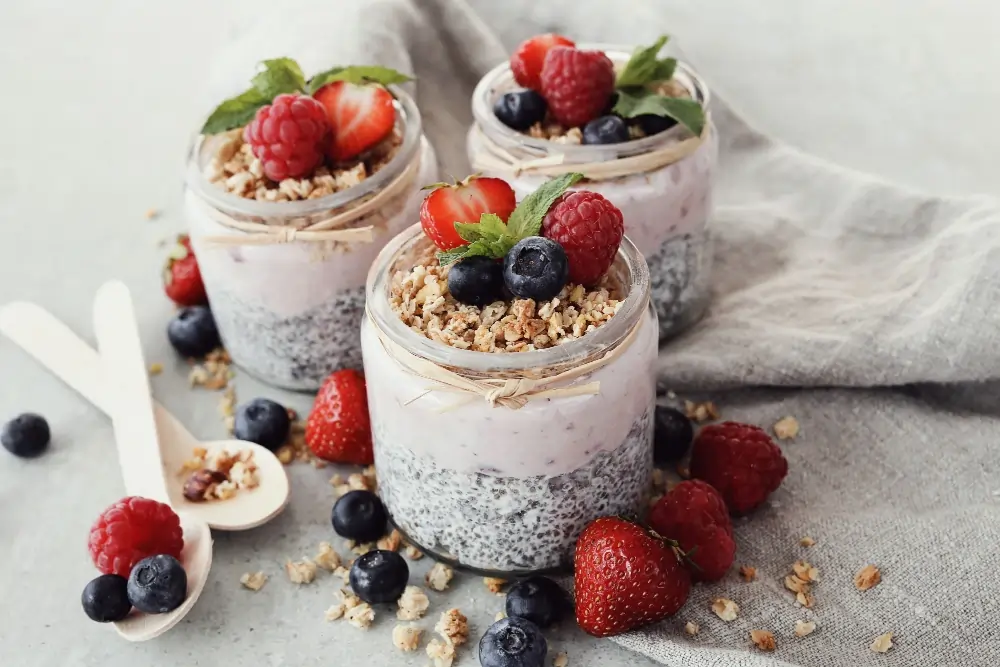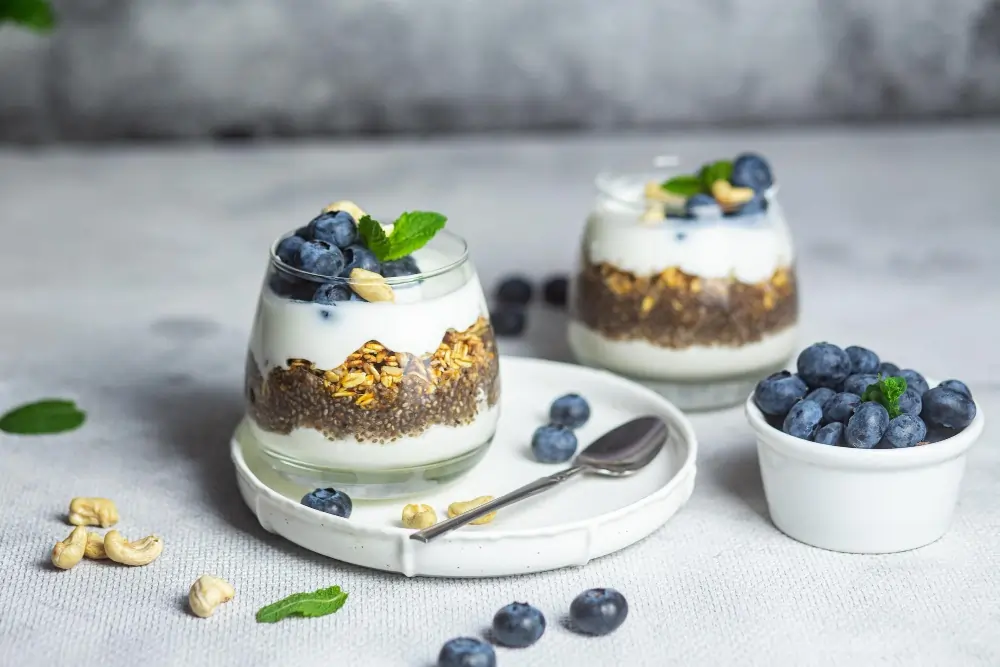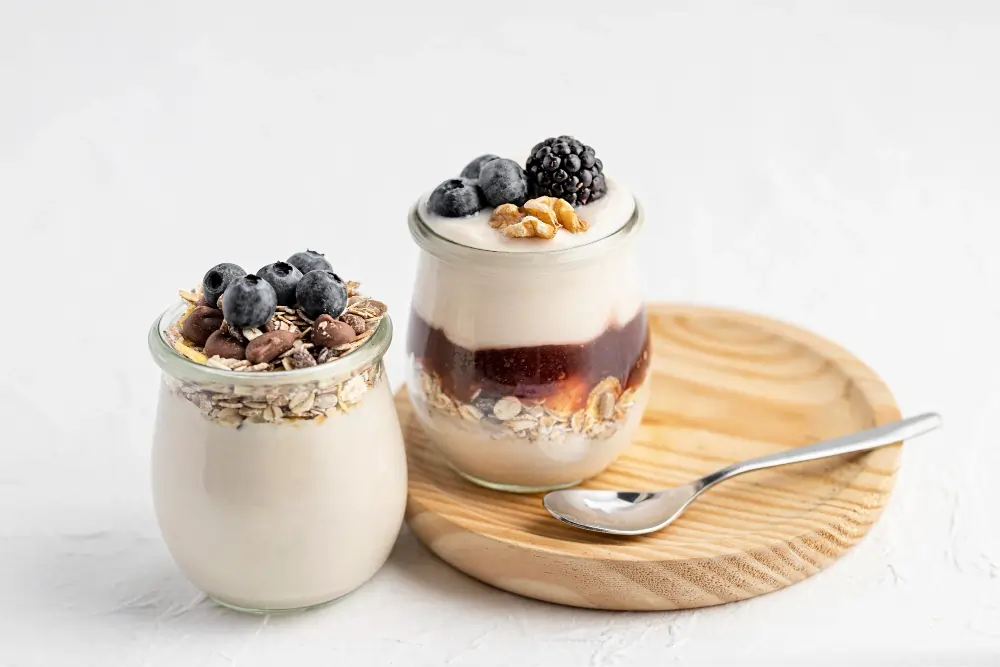Introduction
Blended overnight oats have quickly become a breakfast favorite for busy individuals and health enthusiasts alike. Unlike traditional overnight oats, which are simply soaked, this version involves blending ingredients into a smooth, creamy consistency. Consequently, the texture resembles a pudding or shake, making it appealing to those who prefer a less chewy meal.
The process begins by combining rolled oats with liquids like milk or yogurt, then adding fruits, nuts, or seeds. After blending, the mixture rests in the fridge overnight, allowing the oats to soften and flavors to meld. As a result, you wake up to a ready-to-eat meal that’s both nutritious and convenient. Moreover, blended overnight oats can be customized endlessly, catering to dietary preferences like vegan, gluten-free, or high-protein diets.
Health Benefits of Blended Overnight Oats
Incorporating blended overnight oats into your routine offers numerous health advantages. First, they’re rich in dietary fiber, which supports digestion and keeps you full longer. Additionally, the oats provide complex carbohydrates, releasing energy steadily throughout the morning.
- Heart health: Beta-glucans in oats help lower cholesterol.
- Gut-friendly: Fermented ingredients like yogurt boost probiotics.
- Antioxidants: Berries or dark cocoa powder combat oxidative stress.
Furthermore, blended overnight oats can be fortified with protein powders or nut butters, enhancing muscle recovery. They’re also ideal for managing blood sugar levels, especially when sweetened naturally with fruits like bananas or dates.
How to Make Blended Overnight Oats
Creating blended overnight oats requires minimal effort. Start by gathering your base ingredients: oats, liquid, and a sweetener. Then, follow these steps:
- Add ½ cup oats and ¾ cup liquid (milk, almond milk, etc.) to a blender.
- Include 1 tablespoon chia seeds for thickness and 1 ripe banana for sweetness.
- Blend until smooth, then pour into a jar.
- Refrigerate for at least 4 hours, though overnight is best.
For optimal results, use a high-speed blender to avoid graininess. Meanwhile, experiment with flavors by adding cocoa powder, vanilla extract, or spices like cinnamon.

Best Ingredients for Blended Overnight Oats
Selecting quality ingredients ensures your blended overnight oats are both tasty and nutritious. Prioritize these components:
- Rolled oats: Their texture blends smoothly without becoming mushy.
- Unsweetened almond milk: A low-calorie, dairy-free liquid base.
- Greek yogurt: Adds creaminess and protein.
- Frozen berries: Provide natural sweetness and antioxidants.
Avoid overloading sweeteners; instead, rely on fruits like mango or apple sauce. For crunch, top with toasted coconut or almond slivers before serving.
Top Variations and Flavor Combinations
Blended overnight oats shine in their versatility. Below are popular flavor profiles:
- Tropical: Blend oats with coconut milk, pineapple, and mango.
- Chocolate-peanut butter: Add cocoa powder, peanut butter, and a drizzle of honey.
- Matcha-almond: Mix in matcha powder, almond butter, and sliced almonds.
Savory options are equally enticing. For example, blend oats with vegetable broth, turmeric, and roasted garlic, then top with avocado.
Best Storage and Meal Prep Tips
Proper storage extends the freshness of blended overnight oats. Always use airtight containers to prevent oxidation. Glass jars with lids work well, as they’re microwave-safe and eco-friendly.
- Prep batches for up to 3 days to maintain texture.
- Freeze portions in silicone molds for up to a month.
- Add fresh toppings like granola or fruit just before eating.
Avoid storing acidic ingredients like citrus zest for long periods, as they can alter the oats’ consistency.
Nutritional Value of Blended Overnight Oats
A standard serving of blended overnight oats (300g) typically contains:
- 300–400 calories
- 10–15g protein
- 50–60g carbohydrates
- 8–10g fiber
The exact profile depends on additives. For instance, using protein powder boosts protein content, while nut butters increase healthy fats.
Common Mistakes and How to Avoid Them
Even simple recipes can go wrong. Here’s how to perfect blended overnight oats:
- Too watery: Reduce liquid by 20% or add chia seeds.
- Bland flavor: Incorporate spices like nutmeg or cardamom.
- Soggy texture: Avoid over-blending; pulse until just combined.
Always taste the mixture before refrigerating to adjust sweetness or thickness.
Best Liquid Choices for Blended Overnight Oats
The liquid base significantly impacts flavor and texture. Consider these options:
- Oat milk: Enhances creaminess without overpowering.
- Kefir: Introduces tanginess and probiotics.
- Green tea: Adds antioxidants and a subtle earthy note.
Steer clear of watery liquids like coconut water, which can dilute the mixture.
Can You Use Different Types of Oats?
While rolled oats are ideal, other varieties work with adjustments:
- Steel-cut oats: Blend longer and soak for 12+ hours.
- Quick oats: Reduce liquid slightly, as they absorb faster.
Avoid instant oats, which often contain added sugars and preservatives.
Adding Protein to Blended Overnight Oats
Boost protein content with these additions:
- Collagen peptides: Dissolve easily and support skin health.
- Silken tofu: Blends smoothly for a vegan option.
- Hemp seeds: Offer omega-3s and a nutty flavor.
Aim for 15–20g of protein per serving to keep energy levels stable.
Sweet vs. Savory Blended Overnight Oats
Sweet blended overnight oats often feature fruits, honey, or chocolate. Conversely, savory versions might include ingredients like:
- Miso paste: Adds umami depth.
- Sautéed mushrooms: Provide a meaty texture.
- Nutritional yeast: Delivers a cheesy flavor.
Experiment with herbs like basil or dill for freshness.

FAQs
Can Oats Overnight Be Blended?
Yes, oats can absolutely be blended to create blended overnight oats. While traditional recipes rely on soaking whole oats, blending them breaks down their structure, resulting in a creamier, smoother texture. This method works particularly well for those who dislike the chewiness of whole oats. To achieve the best consistency, use rolled oats and combine them with liquid ingredients like milk or yogurt before blending. Afterward, let the mixture rest in the refrigerator overnight. This allows the oats to fully hydrate and thicken. Notably, blending doesn’t compromise their ability to absorb flavors, making blended overnight oats equally versatile as their soaked counterparts.
Are Blended Oats as Healthy?
Blended overnight oats retain nearly all the nutritional benefits of unblended oats. The process preserves their fiber, vitamins, and minerals, such as magnesium and iron. However, the healthiness of the final dish depends on added ingredients. For example:
- Using unsweetened almond milk keeps calories low.
- Adding fresh fruit boosts vitamin content.
- Including chia seeds enhances omega-3 fatty acids.
Blending may even improve digestibility for some, as it partially breaks down the oats’ cell walls. To maximize health benefits, avoid excessive sweeteners and prioritize whole-food additives.
Is It Okay to Eat Overnight Oats Every Day?
Eating blended overnight oats daily is generally safe, provided you maintain a balanced diet. Oats are rich in nutrients, but relying solely on one meal can lead to nutrient gaps. To avoid this:
- Rotate toppings like nuts, seeds, and seasonal fruits for variety.
- Alternate protein sources, such as switching between Greek yogurt and plant-based powders.
- Monitor fiber intake, as overconsumption may cause digestive discomfort.
Consult a nutritionist if you have specific dietary concerns, but for most people, blended overnight oats are a sustainable daily option.
Can You Use a Blender to Grind Oats?
A blender is an excellent tool for grinding oats into a flour-like consistency, which is ideal for blended overnight oats. Simply pulse rolled oats or steel-cut oats until they reach your desired texture. This technique works well for creating smoother recipes or adapting baked goods. Key tips:
- Avoid over-blending, which can generate excess heat and alter texture.
- Use a high-speed blender for even results.
- Store oat flour in an airtight container if prepping in bulk.
Grinding oats also expands their culinary uses, allowing you to incorporate them into pancakes, smoothies, or savory dishes.
Conclusion
Blended overnight oats are a versatile, nutrient-dense meal that adapts to any palate or dietary need. By mastering ingredient ratios and flavor combinations, you can transform this simple dish into a gourmet breakfast. Whether sweet or savory, high-protein or low-carb, it’s a practical solution for hectic mornings. Start experimenting today to discover your perfect blend!

